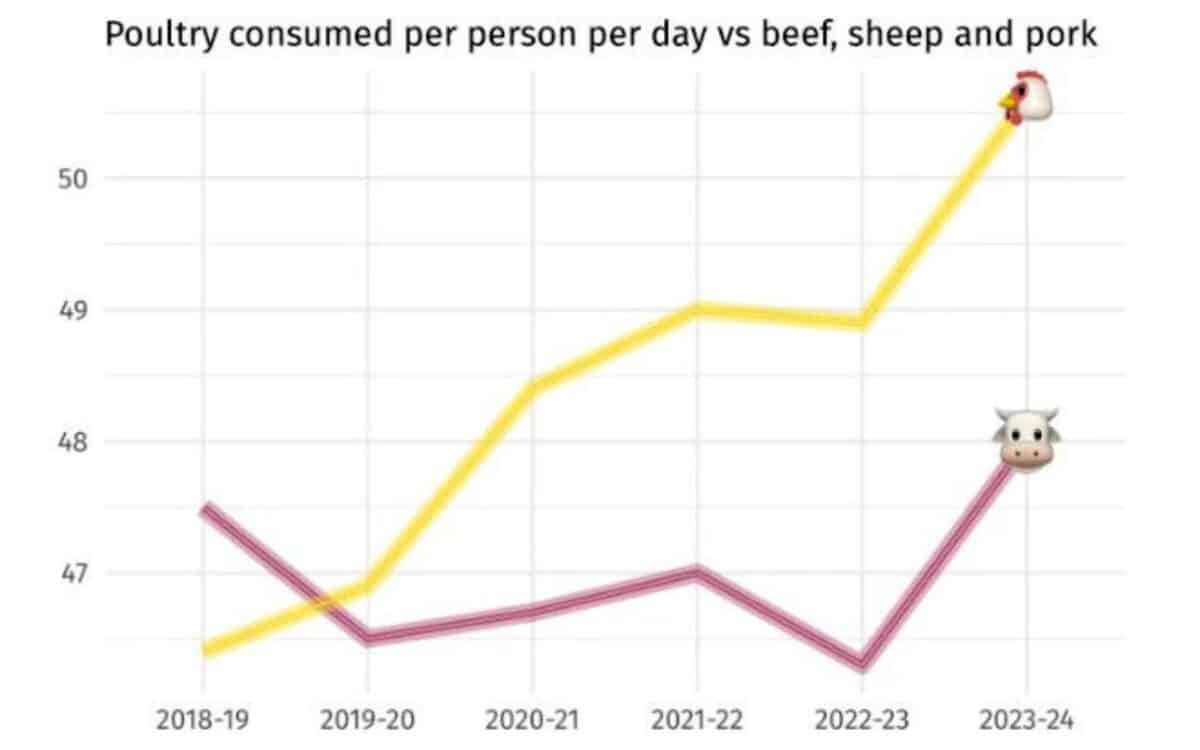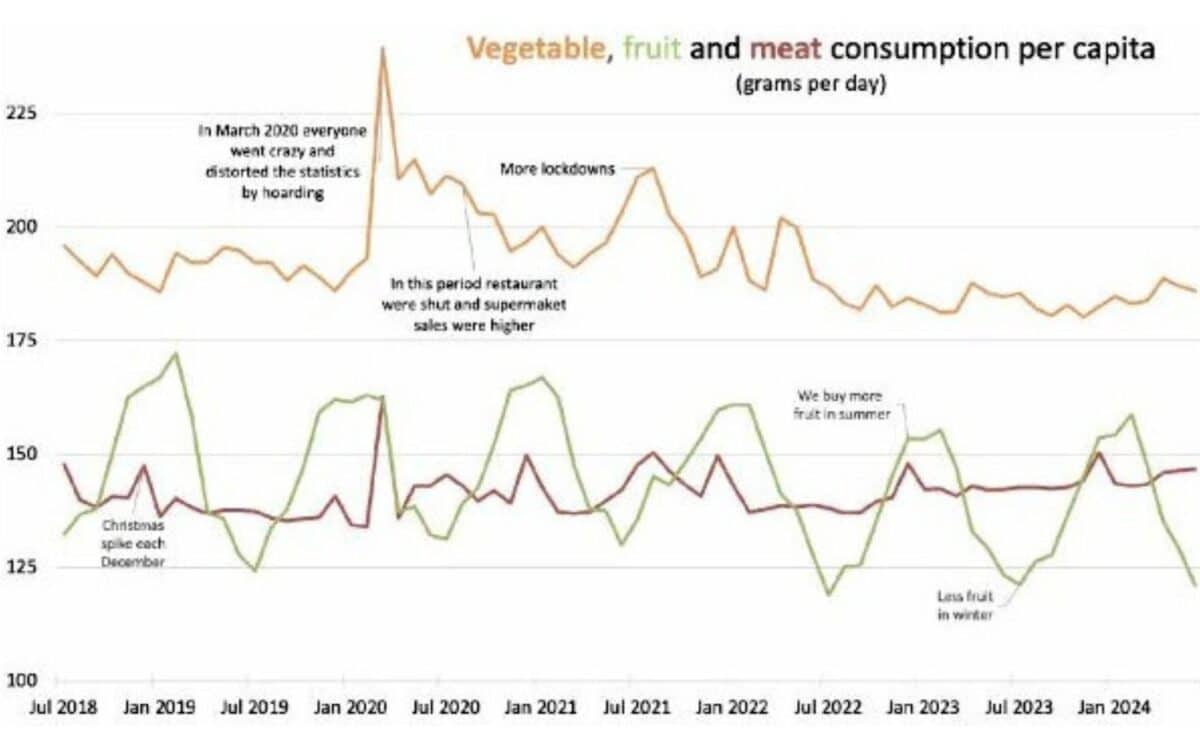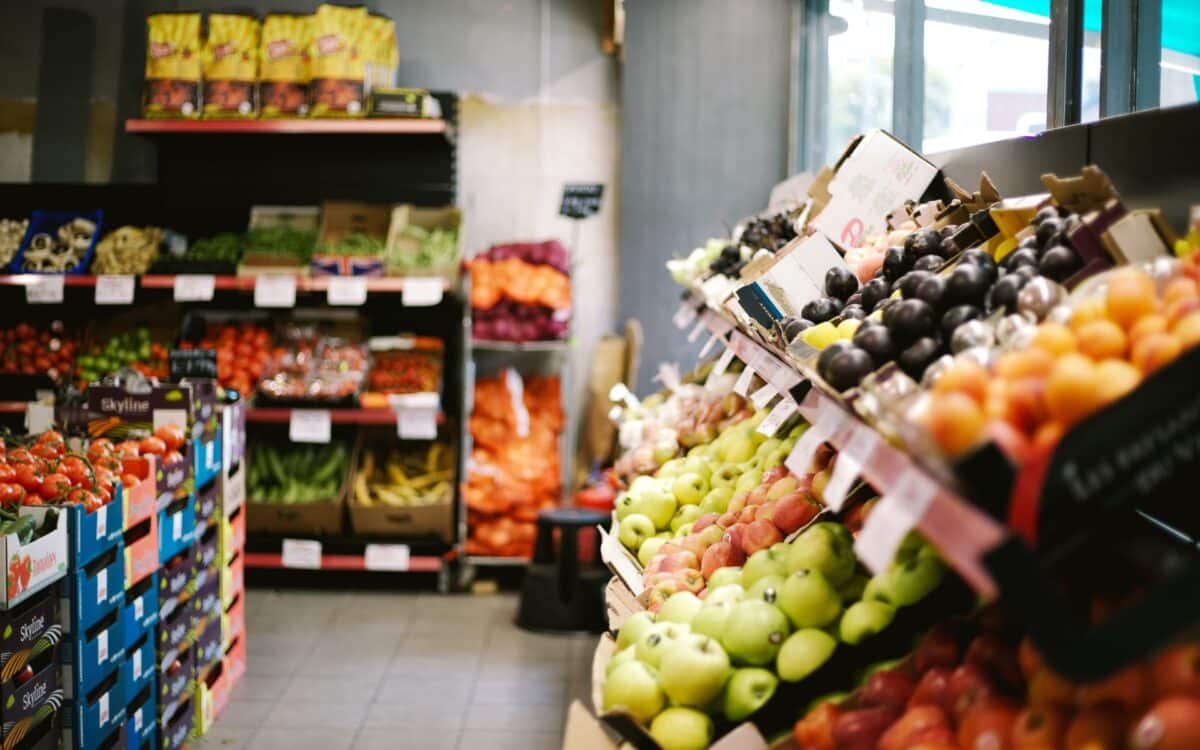In recent months, a once-common grocery item that Australians relied on without hesitation has become increasingly difficult to justify buying. With rising costs impacting everyday purchases, some familiar staples are now slipping out of many shopping trolleys.
News from the latest Australian Bureau of Statistics data highlights how these shifts in consumer behavior are tied to price pressures, changing food trends, and health concerns.
While some items are experiencing steady demand, others are being skipped altogether, revealing a shift in national eating habits as Aussies navigate the challenges of a growing cost of living.
Australia’s Love for Chicken : A Growing Trend
New data from the Australian Bureau of Statistics reveals a growing obsession with chicken. Roast chicken, fried chicken, stir-fry, and shawarma have become a constant presence in Australian diets.
Despite an increase in red meat consumption, chicken continues to dominate as the most popular choice for Australian households.

Chicken is now considered the go-to meat in many homes. It’s affordable, versatile, and in a country known for its religious and cultural diversity, it’s a meat that is universally accepted. Whether it’s a quick takeaway after a busy day or a simple meal solution, chicken fits seamlessly into the modern Australian lifestyle.
The Australian market has seen a dramatic increase in chicken consumption, with more Australians opting for the familiar “bachelor’s handbag” — a ready-to-eat roast chicken from the supermarket. The popularity of such convenience foods reflects the growing demand for affordable and quick meal options.
Why Chicken Is the Top Choice
The key reason for chicken’s continued popularity lies in its affordability. Looking back to 1990, chicken breast was priced at $9.99 per kilogram on special at Woolworths, and today, it’s priced only slightly higher at $10.50 per kilogram.
In comparison, most other grocery items have experienced far steeper price increases, making chicken a reliable option for many Australians.
Chicken is also a safe and inclusive choice. It caters to various dietary restrictions, which is important in a multicultural society. Hindus avoid beef, while Jews and Muslims refrain from pork, but chicken remains a common denominator that transcends religious boundaries.
Despite rising costs in other sectors, the price of chicken has only risen modestly over the past few decades. This steady price increase — just 5% since 1990 — is something rare in today’s grocery market, where prices for most goods have skyrocketed.
Chicken Thighs : The New Favorite Cut
Among the various cuts of chicken, thighs have emerged as a new favorite, now often priced similarly or even higher than breasts. Once considered a cheaper option, thighs are now valued for their flavor and tenderness, especially in slow-cooked dishes.
Unlike chicken breasts, which can dry out in longer cooking times, thighs retain moisture and offer a richer taste.
However, this rise in demand has created a dilemma. Chickens are growing larger in size, particularly in the chest, but not necessarily in the thighs. This imbalance between the demand for thighs and the supply of chicken parts has resulted in higher prices for this particular cut.
The current production methods are incredibly efficient, with chickens reaching up to 2.2kg in just 35 days while consuming 3.3kg of food. However, the disproportionate increase in breast size means that farmers face challenges in meeting the demand for thighs, leading to higher prices for this increasingly popular cut.
Australia’s Meat Consumption and Its Health Impact
The broader trend of increasing meat consumption, particularly chicken, raises concerns about the nutritional balance of the Australian diet.
As more people turn to chicken as a cheap and convenient meal option, the intake of vegetables and fruits has begun to decline. This is reflected in the rise of chronic health conditions, including diabetes, which has increased from 5.1% in 2011 to 6.6% in 2023.

The escalating costs of fruits and vegetables contribute to this shift in dietary habits. Many Australians are opting for cheaper, meat-heavy meals, potentially leading to long-term health consequences.
Fruit consumption is dropping both in summer and winter, as people become more focused on the affordability of their meals. This is also linked to the rising price of fruit and vegetables.
Additionally, vegetables are becoming less prominent in the Australian diet, with meat portions steadily increasing. In fact, the ratio of meat to vegetables is skewing more towards meat, which could be detrimental to the nation’s health.
Could it be time for supermarkets to rethink their offerings? Could introducing more affordable, nutritious options like roasted vegetables alongside ready-to-eat chicken help address these dietary shifts?
Perhaps supermarkets could consider adding items like roasted carrots and potatoes into the “bachelor’s handbags,” which currently only offer chicken.
The Chicken Industry and Its Rapid Growth
The chicken farming industry in Australia is massive, processing 2 million chickens a day — that’s 23 chickens every second. This staggering number reflects the country’s increasing appetite for chicken, but it also raises concerns about sustainability and the future of poultry farming.
Australia is not only a top consumer of chicken but also the number one market worldwide for Kentucky Fried Chicken (KFC) on a per capita basis. This is a further testament to the nation’s ongoing love affair with chicken.
While chicken used to be considered a Sunday roast or a special family meal, it has now become a quick and affordable takeaway for many, especially those who are looking for a convenient meal option after a long day.









